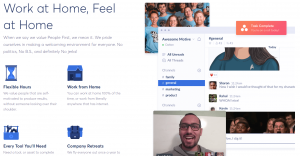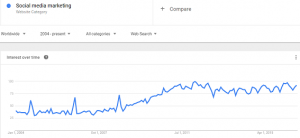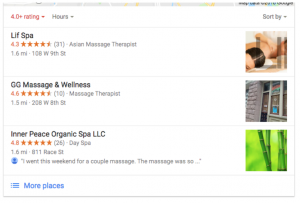‘Tis the season to be jolly… and beef up your workforce to maximize revenues and efficiency. But, obviously, there’s a lot more to managing a contingent workforce than just hiring.
So we’re here to share our tips for effective human resource management for the holiday season. Get ready to embrace your holiday shoppers, not get trampled by them.

For most retailers and service providers, the holiday season brings a mix of emotions. First, there’s excitement ahead of the traditional increase in sales. Then, second, there’s the (similarly traditional) worry and headache of not screwing this all up.
Holidays are often unpredictable, so preparing your manpower strategy for this (potentially) profitable time is crucial. Let’s get started.
The Clairvoyant Manager
What is the most important characteristic of a good manager? Why, the ability to predict the future of course. However, if you’re one of those less fortunate people who can’t predict the future, then you’ll need to make do with calculated predictions based on data and statistical models for HR demand forecasting.
At this point you might be thinking “this is turning into a math lecture” and preparing to run for the hills. You shouldn’t. It just sounds complicated. We’ll give you the cliff notes.
The majority of statistical models for business forecasting attempt to predict sales according to performance in the past. The more complex models also take into consideration other variables, such as the expected impact of seasonal promotions and advertising. But odds are, you don’t need any of this.
If your business has been around long enough then you trust your hunch or gut to predict sales volumes during the holiday season. But that will only get you so far. Real business growth requires long-term accuracy. There’s no way you can avoid statistical models. If you can accurately predict future trends in sales you can run A LOT more effectively.

Still, you don’t have to rely on complex forecasting systems and software but you will, at the very least, need Excel spreadsheets to crunch the numbers, and need to incorporate team manager and customer input into your data.
While this method gives less accuracy than complex statistical analysis models, it’s sufficient for small-medium businesses, where an error of a percent won’t mean million dollar loses for the company.
Once you’ve found the sales forecast method that works for you, you can better understand how many hands you’ll need onboard. And how many of those hands will be those of seasonal workers, temporarily brought onboard.
Why Hire Contingent Workers?
Since cavemen went on springtime mammoth hunts, contingent workers have been necessary for survival. Across all industries, the need for seasonal workers is strong and getting stronger.
According to statistics by the U.S. Government Accountability Office, 40% of the 2015 U.S. workforce was made up of contingent workers. There a re a few reasons for the recent popularity of contingent hires.
First, this trend is part of the so-called gig economy, very popular with technology savvy millennials and high-tech businesses.
Second, it is also influenced also by legislation changes like the Fair Labor Standards Act (FLSA) overtime regulations that forces employers to pay existing staff more overtime for working during the holidays.
But since you’re a rockstar type boss, you don’t wait around for legislation. It won’t be overtime costs that force your hand into hiring seasonal workers to boost your ranks – it will be your data but we’ll get to that later.
Regardless of legislations, many full time employees take this time off during the holidays. In many ways, it’s what holidays are for. That, and shopping, of course.
Last but definitely not least is you. Yes, you, the manager who both dreads and eagerly expects the seasonal increase in business. With all the challenges in store for you, odds are you still want to have at least some time off to devote to your family and friends.

So your goal is to have a strategy long before the rush so you can lay back and enjoy the holidays, while your business runs on autopilot. It’s a scary thought we know, but, if done right, it’s no less that mind blowing.
Now that you know WHY a contingent workforce can help you maximize profits this holiday, let’s discuss:
How to Manage Your Contingent Employees?
1. Find out what job classifications need to be reinforced
Once you’ve figured out just how many seasonal workers you need, you need to find out where they are needed. And this isn’t guesswork – if you want effective results, you have to gather data and act on insights from its analysis. If we sound like a broken record now, just wait.
For example, from 2008-2013, retailers dropped staffing quotas by 12%, which caused longer cues at the cash-registers, especially during the holiday shopping season. If the invasion of holiday shoppers emptied the shelves faster than your staff could re-stock them, as happened at Walmart during Thanksgiving of 2013, you probably need more seasonal workers in that department, making sure your customers don’t end up buying elsewhere because the product they want is in the back and not on the shelf.

Courtesy of Bloomberg.com
2. Creating policies for hiring and managing seasonal workers
So you know how many seasonal employees you need and where they are needed in your business. Now you need to figure out the process of hiring and managing these employees.
If you’ve worked with seasonal workers before, it’s very likely you already have a contingent workforce policy and recruitment process. If you haven’t created one yet, it’s important that you do. A clear policy and an effective recruitment process are crucial to ensure that the hands you bring onboard are suited for the role they need to fill.
Team managers and supervisors need to craft these policies and make sure they are designed to meet their manpower needs. Also, they need to have a clear plan for managing contingent workers, evaluating their performance, and reporting on it so it can be used to gain insights and maybe even learn a thing or two from the experience.

3. Speeding Up Contingent Employee Onboarding
Getting a new employee up to speed on company products, systems, and procedures can be a painstakingly long process. With contingent employees, especially seasonal ones, you do not have the luxury of having a lengthy training process.
Your goal should be to streamline the onboarding process with clear roles for managers, team leaders, and HR personnel in preparing your contingent workforce for the holiday onslaught.

4. Have Readily Available Training Modules
One of the most effective components of an employee onboarding strategy is training modules that were prepared in advance and require little to no additional intervention from your team.
For team managers and supervisors, it’s always frustrating to invest time and effort in training and teaching contingent employees only to see them leave after a short period of time.
Developing these training models is a process your team needs to be involved in, and odds are they will be grateful as it will save them time. Time they should be investing in optimizing performance and not explaining things a short video clip can explain just as well.

How to Align Contingent Workers with Company Goals
1. Hit The Ground Running with Ready Made Workflows
Preparation for contingent employee integration into your business operations includes not only the training materials and modules, but also clear and easy-to-execute workflows.
One of the best ways to create these is by having your team members document their workflows in such a way that it would be easy for newly introduced contingent workers to “copy” effective processes. This right here, is your key to growth:
If you can create simple workflows that are easy and cost-effective to replicate you have effectively hacked the growth of your company and are on the fast-track TO THE BOAT HOUSE IN THAILAND.
These will also reduce the time and effort your management team will need to invest in integrating the new workers into the business after they’ve been onboarded.

2. Conduct Effective Communications
No matter how experienced, smart, and well recruited your contingent employees are or even how flawless your onboarding process is, there will be need for input and many questions to answer.
This is why you can’t effectively employ a contingent workforce without a well-implemented communication strategy between your managers and contingent workers.
Effective communications also help maintain processes and disseminate information on the go. You probably already have communication schemes set for your permanent workforce.
Contingent workers need one that takes into account their temporary state in the company, as well as their partial familiarity with existing business processes and methods of communication.

3. Manage and Analyze Data
Keeping track of the increase in staff and maintaining efficiency can be difficult. By gathering data and analyzing it (sometimes in real time) you can make smarter business decisions on the go and gather insights that can help in future decision-making processes.
Using technology to your advantage, you can now measure how many employees are currently working, how much they’re doing, what they are doing and how it affects the numbers in the cash register.
For example, knowing how many employees are currently out for lunch and how it affects sales can help you decide what changes (if any) need to be applied to the breaks time-table to minimize impact on overall performance.

4. Keep Track of Contingent Employee Costs
Contingent workers don’t just cost you the hourly or daily wages you pay them. There are additional costs you must take into consideration when allocating budgets for contingent workforce recruitment and management.
These costs can include insurance, recruitment agency fees as well as expenses you don’t normally consider like additional tools you may need to purchase for the additional workers. Even perishables like breakroom coffee and toilet paper can suddenly grow when your manpower temporarily increases in size.
5. Learn to Say Goodbye
All good things must come to an end, and with the end of the hectic holiday season, you will need to let your contingent workers go. This is no easy task because it always feels slightly awkward to let someone go, even if it’s planned and especially if they did a stellar job. It’s also challenging because passing the reigns back to the permanent staff requires a process of summation and debriefing.
Another way you can use contingent workers as a resource is by surveying them at the end of the employment period to get their insights on processes and team members’. You might be the boss, but that’s exactly why it’s easy for you to get tunnel vision and miss some things a pair (or twenty) or fresh eyes can see. Their limited knowledge of company traditions and history can actually be an advantage in learning how to optimize your business throughout the year and not just during the holidays.
To achieve this, you need to implement a standardized process for letting go of contingent employees that would help things back on track after the holiday season, and give you invaluable insights into your business.

6. Discover Potential
Hiring contingent workers doesn’t just bring extra working hands to your business, but also helps you discover and recruit employees you wouldn’t otherwise find. Some contingent employees can be so good at their temporary job, you might in some cases decide to offer them a permanent position. This is not a common scenario, but with the holiday season coming up, everyone is expecting miracles.
Now that you have some guidelines to effectively manage your contingent workforce over the holiday season, you don’t need a miracle to make the most out of the seasonal shopping sprees without giving up on your own holiday fun.
Business & Finance Articles on Business 2 Community(125)
Report Post








